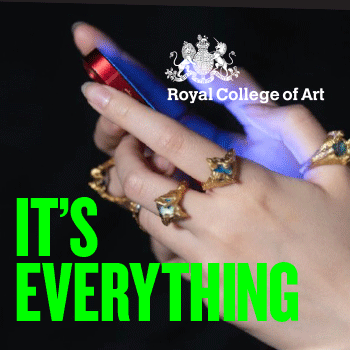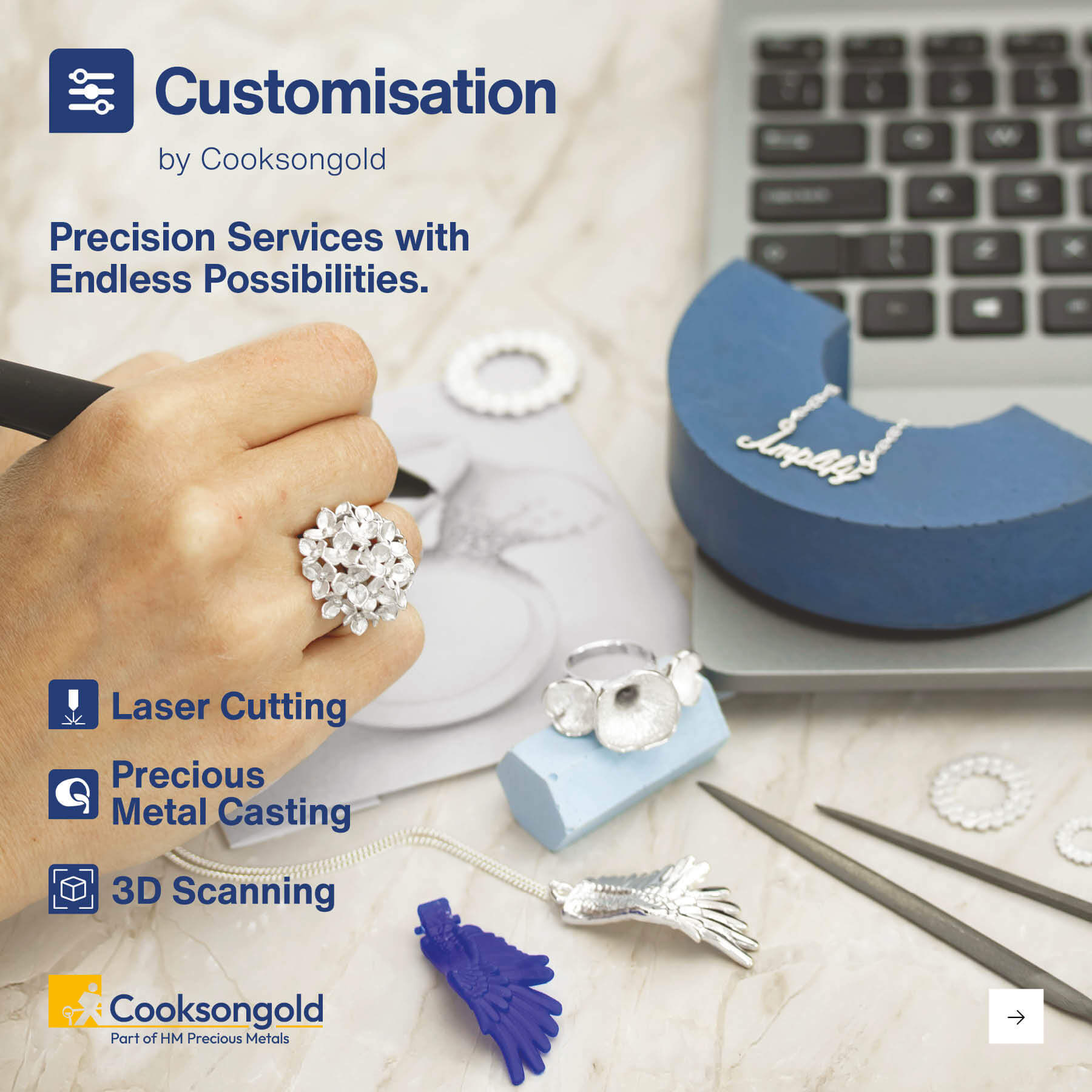Jeweller Sam Ritte got his career break via Benchpeg
Graduate crafts heavy metal jewellery for rock legends
Reading Time:
1 min {{readingTime}} mins
Since graduating from BA (Hons) 3D Design Crafts in 2018 at Plymouth College of Art, Sam Ritte has secured a role at The Great Frog, the pioneers in handcrafted, iconic statement jewellery for rockers, bikers and those favouring their metal heavy.
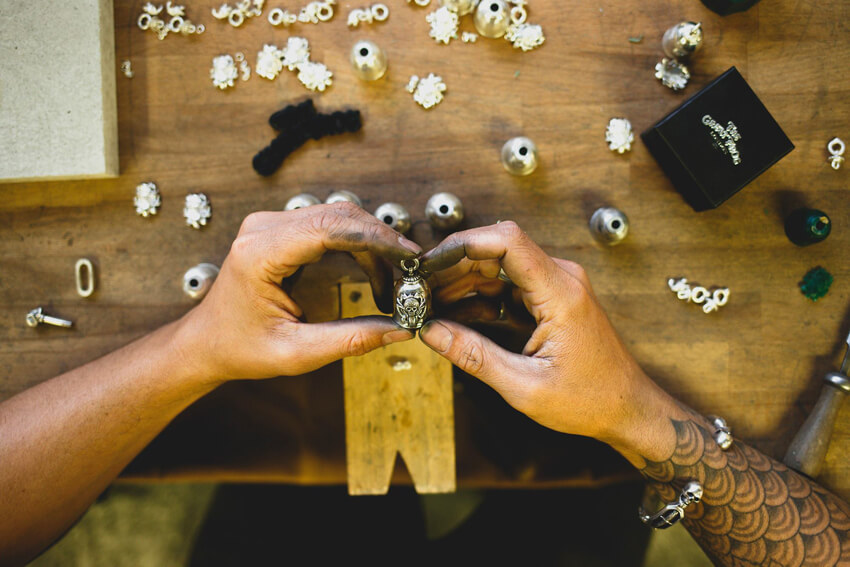 Crafting jewellery at The Great Frog.
Crafting jewellery at The Great Frog.
They have produced bespoke pieces for a cross section of the fashion and music industry since 1972, including rock legends Metallica, Iron Maiden, Motorhead, Slash and Aerosmith. Every piece of jewellery sold at The Great Frog is hand carved and crafted on site, at their shop in Soho, London, each imbued with an authenticity that can’t be replicated.
Sam is a maker focusing mainly in metals, jewellery, and leatherwork. He uses a combination of found objects, precious stones, and metal to create bespoke pieces using a blend of traditional and contemporary techniques, bringing new life and purpose to forgotten items.
Plymouth College of Art caught up with their ex-student Sam to find out more about what it’s like to work in his dream job...
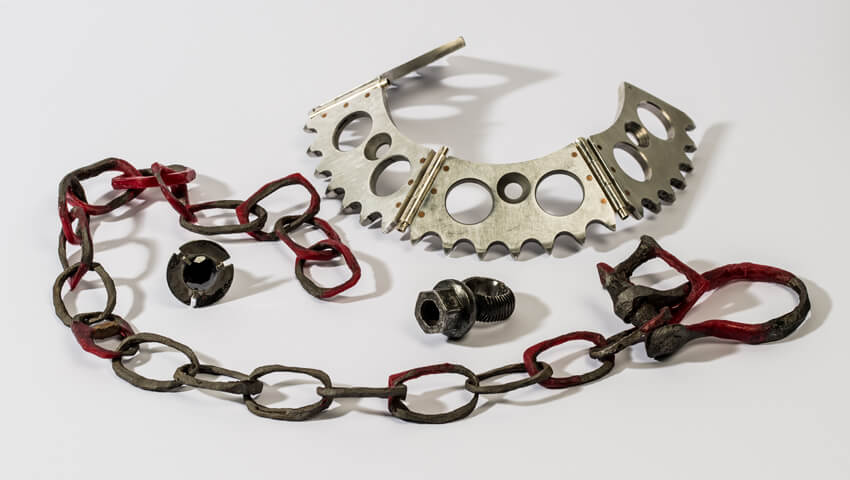 Sam Ritte, part of his 'Repair, Adapt, Manipulate' collection.
Sam Ritte, part of his 'Repair, Adapt, Manipulate' collection.
Hi Sam, so tell us about your practice and influences
SR: I’m not sure the best way to describe what I do, maybe it’s easiest for me to say I’m currently focusing on jewellery.
In my jewellery, I primarily use found iron objects, like nuts and bolts, screws, chains. I’m a magpie for what other people might consider as ‘rubbish’.
What kickstarted your love of creating jewellery? Is it something you always thought you'd end up doing?
SR: I have a long history with jewellery, I remember wanting to wear rings when I was about six years old. Later in my teenage years the trend of having as many bracelets as your arms could hold was big and I was into it.
There were many instances where I would be told off for wearing jewellery at school, having to collect at least twenty bracelets, five necklaces and a couple of rings from the head of year at the end of the school day and explain why I was so adamant to break this rule. My love for jewellery also has a strong connection with my love for pirates and treasure!
Tell us about your role with The Great Frog
SR: For the most part, I produce stock for the shops in New York and L.A, and occasionally producing stock for filling internet orders.
At The Great Frog, all the jewellery is cast and handmade in London by a motley crew of jewellers, I’m part of that team. Typically rings need to be sized and polished, bracelets and necklaces need to be assembled and polished.
What appealed to you about the brand?
SR: I’ve idolised this company since my early teens, discovering The Great Frog thanks to my Dad. Later I realised that so many of the musicians I listen to also wear jewellery from the Great Frog, and a couple even have collaborations with them too, including Iron Maiden and Motörhead.
I also really respect the overall branding, ethos and social media of the company, they have a consistent aesthetic that’s well thought out and in lack of a better term, really badass.
Can you talk us through the process of applying for this job?
SR: I’m a big fan of Benchpeg, a website and newsletter with so many useful things for jewellers, and The Great Frog were advertising a position on their jobs board. I didn’t even stop to think about it, I just applied straight away and just crossed my fingers.
I was invited to an interview, where I chose to take some of my recent work with me to highlight my skills and interests. This led to me being selected to do a trial shift where I had to make a bracelet and clean up a ring. I did well during the trial, but I also had a similar taste in music to the manager so that could have swayed it!
I was also told that I was the only applicant that had a completely black CV with white writing, and although I was told this killed their printer, it made an impression!
What has been the highlight of your time there so far?
SR: They host events at The Great Frog that are really great, and the staff get-togethers have been a highlight so far.
I also work alongside some truly lovely and talented people, as the company encourages creativity in its employees most of the jewellers have their own collections on the side. This means the workshop is a wealth of experience and encouragement, a really good environment to work in. This is something I was scared of losing when transitioning from the workshop at Plymouth College of Art to a full-time job, but it’s there, if not more so.
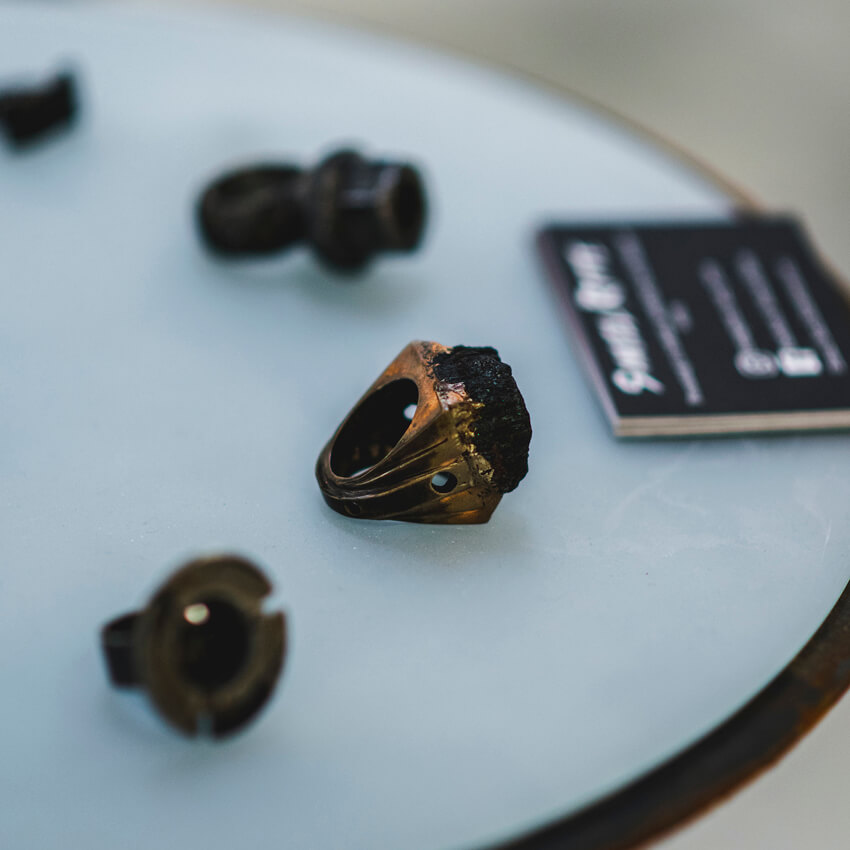 Sam Ritte, 'Repair Adapt Manipulate'
Sam Ritte, 'Repair Adapt Manipulate'
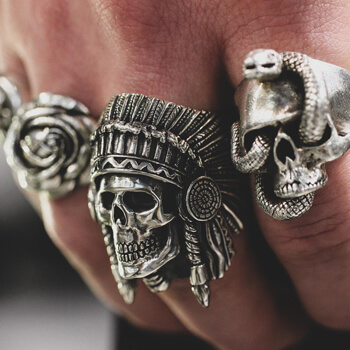 The Great Frog, creating alternative jewellery since 1972.
The Great Frog, creating alternative jewellery since 1972.
What are the biggest challenges of transitioning from study to career work?
SR: Honestly, I think the biggest challenge is money, and my advice to any student is to try and make sure they have some savings put aside. I’m a little too good at spending money and not thinking about the future, I impulse buy too often!
But there can also be a problem with lack of confidence, there’s a psychological problem a lot of people suffer from called Imposter Syndrome, which is a feeling like you’re not good enough to be where you are. It’s something that is completely in your own head, and completely normal to feel. Whenever I’ve felt this way, it’s always disappeared as soon as I’ve spoken to people and described how I’m feeling. It’s pretty surreal to go straight from education into a job you’ve wanted for 10 years, so I did have moments of feeling like this.
Where do you hope to be in five years time?
SR: In five years time, I would like to have advanced my role at The Great Frog. Alongside this I would like to have more of my own work in production, working on it in my spare time. Five years is quite a lot of time but I’d like to get some of my own work for sale in shops and galleries by this time. Other than that I’m just taking my career month by month, not planning too far into the future and enjoying where I am.
This article was first published by Plymouth College of Art and has been reproduced with their kind permission.
Author:
Published:




